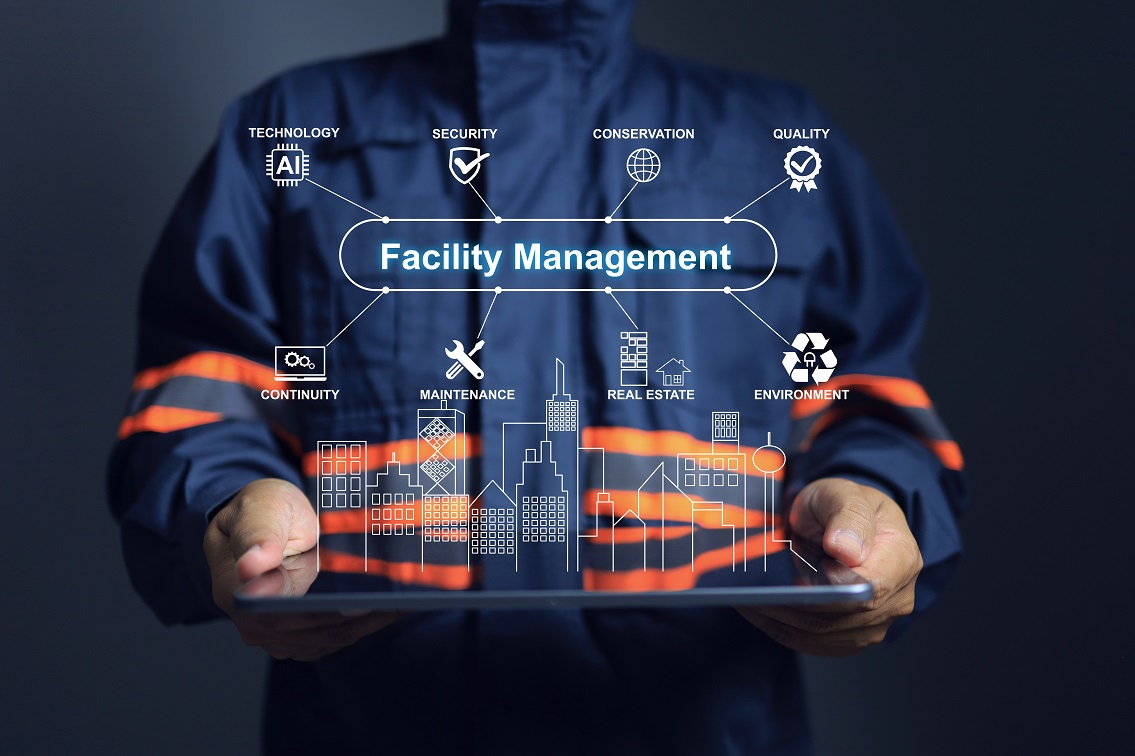Best Practices in Facility Management for Modern Businesses
Best Practices in Facility Management for Modern Businesses
Blog Article
Key Trends Shaping the Future of Center Monitoring in 2024
As we look in advance to 2024, the landscape of facility management is positioned for considerable change, driven by several vital patterns. The integration of clever structure technologies and a change in the direction of data-driven decision-making guarantee to boost functional efficiency while focusing on sustainability in method.
Smart Building Technologies

Smart structure modern technologies encompass a wide range of systems, including smart lighting, heating and cooling controls, and safety systems. By incorporating these systems, center supervisors can check and readjust criteria in real-time, bring about substantial decreases in power waste and functional prices. Wise sensors can spot tenancy levels and change illumination and temperature accordingly, ensuring that power is just utilized when required.
Moreover, these technologies promote boosted data collection, allowing companies to track use patterns and identify opportunities for more enhancements. The implementation of clever structure technologies not just adds to sustainability goals yet likewise creates much healthier work environments that can enhance employee performance and fulfillment.
As we move right into 2024, the adoption of clever building technologies will likely speed up, reflecting a more comprehensive shift in the direction of more smart, responsive, and lasting facility monitoring methods.
Data-Driven Choice Making
Progressively, companies are leveraging data-driven decision making to boost facility monitoring practices. By taking advantage of data analytics, center supervisors can obtain workable insights that substantially improve operational performance and resource allowance. The integration of sophisticated modern technologies, such as IoT sensors and real-time tracking systems, makes it possible for the collection of large quantities of information on building efficiency, occupancy rates, and power consumption.
This wide range of information enables center managers to recognize trends, anticipate upkeep needs, and proactively address concerns prior to they escalate. As an example, anticipating analytics can forecast equipment failures, decreasing downtime and repair work expenses. In addition, information visualization tools help with much better interaction amongst stakeholders, ensuring that informed decisions are made collaboratively.
Furthermore, data-driven techniques boost critical preparation by enabling center supervisors to assess the effectiveness of current practices and make informed choices relating to investments in technology or infrastructure. As organizations increasingly prioritize operational quality, data-driven choice production is positioned to end up being a foundation of successful facility management strategies in 2024 and past. Inevitably, the capacity to take advantage of data efficiently will empower organizations to develop extra reliable, efficient, and durable facilities.
Sustainability and Green Practices
The focus on data-driven choice making naturally aligns with the expanding concentrate on sustainability and eco-friendly practices within center administration. As organizations increasingly focus on environmental responsibility, center managers like it are leveraging analytics to optimize source usage, reduce waste, and decrease carbon impacts. This tactical approach makes it possible for the combination of energy-efficient systems, such as LED lighting, wise a/c controls, and renewable resource sources right into facility procedures.
Additionally, the implementation of lasting methods expands past energy usage. Center managers are promoting and taking on environmentally friendly products recycling campaigns to create a round economy within their centers. This not just improves the ecological profile of the company yet likewise cultivates a culture of sustainability amongst workers.
Conformity with environmental guidelines is another important aspect driving the fostering of environment-friendly practices. By using information analytics, facility supervisors can check compliance metrics and determine locations for improvement, guaranteeing adherence to neighborhood and international sustainability criteria.
Hybrid Work Designs
A substantial change towards hybrid work designs is improving the landscape of center management in 2024. This paradigm integrates in-office and remote job, necessitating a reevaluation of area use, source appropriation, and employee engagement techniques. Organizations are progressively acknowledging the relevance of adaptable workspaces that deal with diverse needs and preferences.
Facility supervisors should adjust by executing functional office layouts that support collective initiatives while offering locations for focused work. This consists of the integration of modern technology to facilitate seamless interaction and collaboration among in-office and remote employees. Smart building remedies, equipped with analytics and sensors, permit real-time surveillance of space usage, making it possible for go to website organizations to enhance their settings efficiently.
In addition, crossbreed job versions highlight the requirement for efficient facility management that prioritizes employee experience. In significance, the crossbreed job design is transforming facility management, encouraging an aggressive strategy to satisfy the progressing demands of the workforce.
Boosted Owner Health
As organizations embrace hybrid job designs, an increased focus on owner health is ending up being essential to center administration techniques. Facility Management. This shift identifies that a completely satisfied and healthy workforce straight impacts performance and retention prices. Facility supervisors are now prioritizing environments that promote physical and mental health, integrating components such as natural lighting, biophilic style, and available wellness sources

Innovation plays a vital duty in this advancement. Smart structure systems can keep an eye on ecological aspects and change settings in real-time, guaranteeing optimal comfort degrees - Facility Management. In addition, responses their explanation devices, such as tenancy sensors and employee studies, permit center managers to continually refine wellness campaigns based upon resident needs.
Final Thought
In 2024, the future of facility monitoring will be substantially influenced by the combination of wise building technologies and data-driven decision-making, fostering improved operational performance. These fads jointly highlight the developing landscape of facility management in response to modern obstacles and chances.
Facility managers are adopting eco-friendly products and advertising recycling initiatives to create a round economic climate within their facilities.A significant change towards hybrid job designs is reshaping the landscape of center administration in 2024.Furthermore, crossbreed job models stress the requirement for effective center administration that prioritizes staff member experience.As organizations welcome hybrid job models, an enhanced focus on owner health is becoming indispensable to facility monitoring methods.In 2024, the future of facility administration will be dramatically influenced by the assimilation of smart structure technologies and data-driven decision-making, cultivating improved functional efficiency.
Report this page